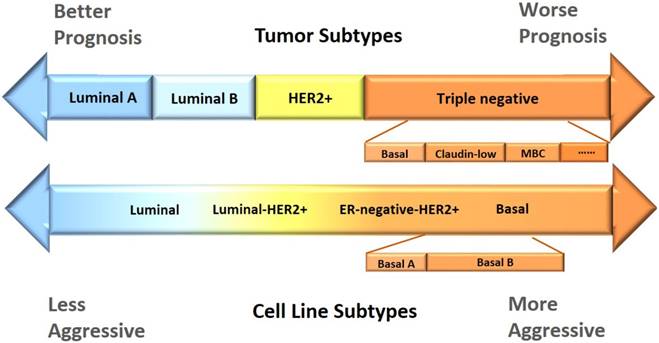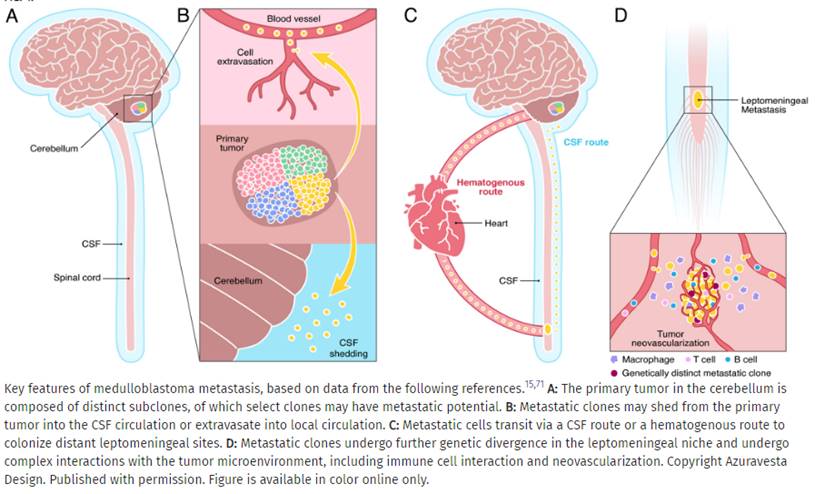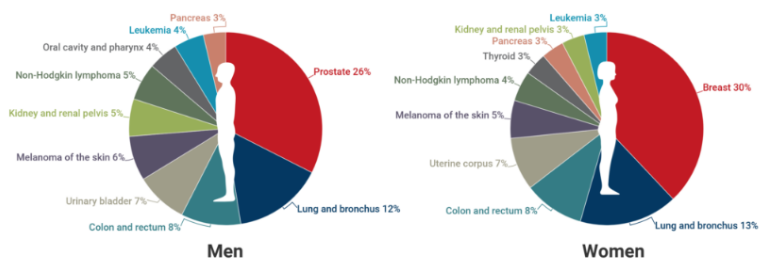Blog Author: Archita KhaireBreast cancer is the most common cancer worldwide. Last year 2.3 million women were diagnosed with breast cancer, and 685,000 deaths were reported. The National Cancer Institute states that more than $500 million is spent yearly on breast cancer research. Even with the significant investment, approximately 43,000 women in the U.S. are expected to die in 2021 from breast cancer.
Based on the human epidermal growth factor receptor 2 (Her2), progesterone receptor (PR), and estrogen receptor (ER), breast cancer is categorized into four molecular subtypes: Blog Author: Archita KhaireMedulloblastoma is the most prevalent brain tumor type in children. It is also called a cerebellar primitive neuroectodermal tumor (PNET)—that starts in the region of the brain at the base of the skull, called the posterior fossa. In the United States, about 400 children are diagnosed with #medulloblastoma every year. The survival rate of Medulloblastoma is about 70%.
Blog Author: Archita KhaireWhat is a brain tumor?
A brain tumor occurs as a result of an abnormal growth or spread of cells from within the brain or its supporting tissues that can damage the brain. Glioblastoma (also known as GBM) is the most aggressive type of brain tumor. It accounts for 48 percent of all primary malignant brain tumors. As per National Brain Tumor Society more than 10,000 individuals in the United States lose their life because of #glioblastoma every year. Prognosis of the patients with #GBM is very low (< 15 months). Let's look at different stages of GBM where A.I. is playing a critical role in helping healthcare professionals. Diagnosis Brain tumor diagnosis is typically a two-step process: MRI & Biopsy Magnetic resonance imaging (MRI) Doctors use MRI to detect the presence of tumors in the brain. #MRI is non-ionizing, non-invasive technique and provides good spatial and temporal resolution. But the segmentation and delineation of MRI images is time consuming and accuracy depends on expertise of the person analyzing the images. Deep learning algorithms are now helping radiologists to accurately identify and segment the tumors in MRI scans. Multiple images of brain are acquired using volumetric MRI. T1-weighted and T2-weighted are the most common MRI sequences. Fluid Attenuated Inversion Recovery (Flair) is also a frequently used sequence in brain tumors. Different types of MRI sequences help with delineation of the GBM. Edema, a fluid like collection surrounding the tumor cells is best visible in the Flair and T2 sequence. Necrotic region (dead cells) and enhancing tumor is very well seen in T1 post contrast sequence. Blog Author: Archita KhaireCancer is the second leading cause of death in the world after cardiovascular diseases. The World Health Organization reported 18 million new cancer cases and 9.5 million cancer deaths across the globe in 2020, approximately 49,000 new cases and 26,000 deaths every day. Cancer also has significant and increasing impacts on the economy. The annual economic cost of cancer is estimated at approximately $1.16 trillion.
There was a time when cancer was essentially a death sentence. However, in the last few decades, researchers across the world have made major advances in the mechanics behind how to prevent, diagnose, and treat cancer. Artificial Intelligence is now rapidly changing the field of oncology. From enhancing diagnosis to personalizing treatment to discovering novel anticancer drugs, AI has made significant contributions to various aspects of oncology research in just a few years. Cancer is not a single ailment, rather there are many types affecting human health. The picture below depicts a few different types for men and women. Blog Author: Archita Khaire "Every aspect of learning or any other feature of intelligence can in principle be so precisely described that a machine can be made to simulate it. An attempt will be made to find how to make machines use language, form abstractions and concepts, solve kinds of problems now reserved for humans, and improve themselves. We think that a significant advance can be made in one or more of these problems if a carefully selected group of scientists work on it together for a summer." ~ The 1956 Dartmouth Workshop in Hanover, New Hampshire and the Birth of AI. The 20th century saw the birth of Artificial Intelligence, which would revolutionize human life in the 21st century. Currently, we are in the midst of an AI revolution. We are experiencing it every day and its full magnitude is yet to be known. The possibilities of billions of people connected by mobile devices, with unprecedented processing power, storage, and access to knowledge are unlimited. These possibilities are only multiplied by breakthroughs in the fields of AI and robotics that are opening the path to a better future. Digital transformation is driving the exponential growth of health data. With digitization and connectivity becoming ubiquitous, we are more capable than ever to collect information about individual and population health. Doctors state that the best care happens only when we provide relevant information to a prepared mind in the moment. AI is the only way to decrease the amount of information that's being fed to the prepared mind, to contextualize and surface the relevant information. That is when the best medical decisions are going to be made. AI-enabled healthcare is not “the medicine of the future,” nor does it mean robot doctors rolling room to room in hospitals treating patients. Instead, AI is poised to make impactful and urgent contributions to the current healthcare ecosystem. Healthcare organizations are changing the way they use data, from a pure system of records to a system of insights that once acted on, will deliver systems of engagement. In these systems of engagement, patient outcomes and experience are top strategic priorities - and AI is expected t drive them a quantum leap forward. The healthcare system is also taking a strategic approach to personalized medicine to enhance the use of health data for treatment and research. AI presents novel ways to address old problems and opens doors to solving newly developing population health concerns. These are a few promising applications of AI in healthcare: AI-assisted robotic surgery, AI-powered virtual nurses, AI-based clinical management, AI-driven medical diagnosis, AI for clinical trials, AI in drug discovery. In future blogs, we will explore these applications in detail to gain insight into the latest advances of AI in healthcare. |
Page HitsAuthorArchita Archives
January 2023
Categories |





 RSS Feed
RSS Feed